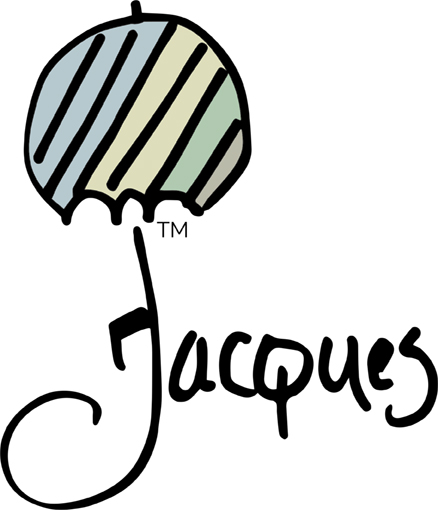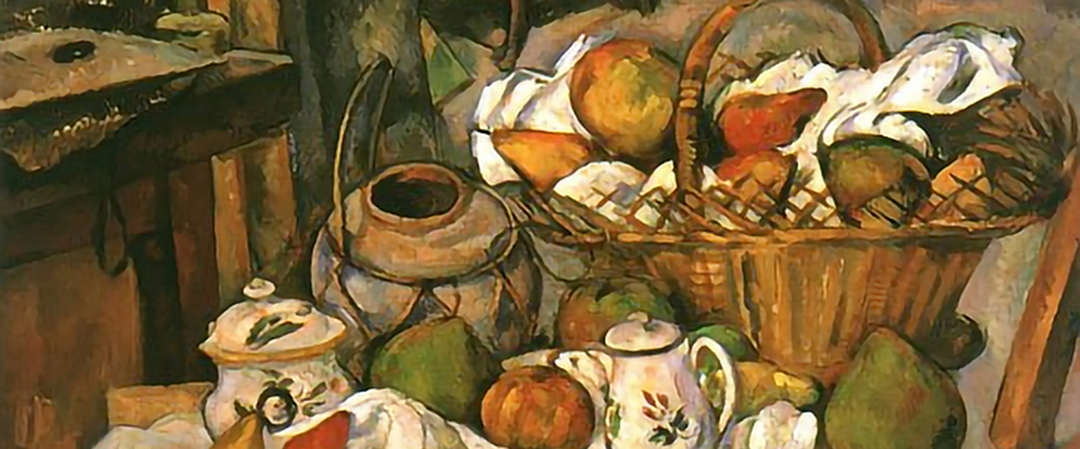“I know once people get connected to real food, they never change back.”
Alice Waters
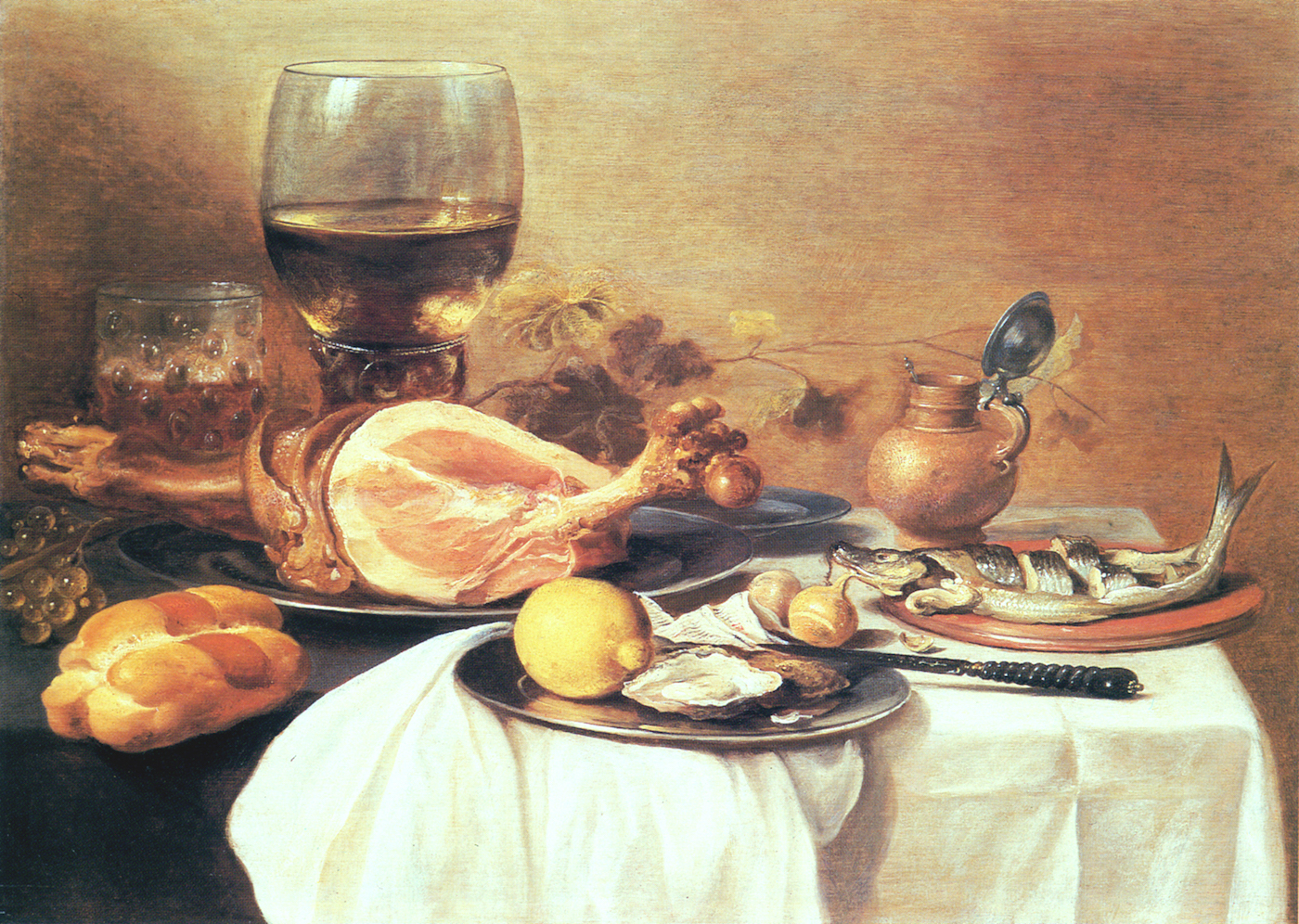 Empty Easel: “The Long History of Food in Art” [*]
Empty Easel: “The Long History of Food in Art” [*]
“Historical studies show that the Greeks and Romans prided themselves in the realistic depiction of food in artworks. A glass bowl of fruit was commonly included in Roman paintings to boast of the delicacies that the rich citizens of Rome enjoyed, and of the generous hospitality they had to offer. Even farther back, archaeologists have found drawings of food on the walls of Egyptian pyramids. In ancient Egyptian culture it was believed that those drawings, through magical properties, would nourish those gone on to the after life.
Things haven’t changed much since then. . . today you will find depictions of food on the walls of restaurants, people’s homes and in hotels. We don’t necessarily believe that they nourish us like the Egyptians did but we do clearly find something very appealing, comforting almost, by having paintings of food.
During the Renaissance period, still life objects (often including food) were subtly incorporated into paintings with religious themes. Realism and meticulous detail were prized, and in the late 15th century as interest in strictly religious paintings waned, everyday objects such as vases of flowers became popular by themselves.
In the 16th and 17th centuries there was increased interest in scientific examination, and as a result, inanimate objects were studied and depicted by artists in their most realistic form. At the forefront of the food-painting movement were the Dutch realists whose impressive kitchen and market paintings featured various displays of food fare on counters and tables.”*Quotation above is taken directly from the website cited and is the property of that source. It is meant to inform the reader and to give credit where it is due.
“Food art is a type of art that depicts food, drink or edible objects as the medium or subject matter of an artistic work to create an attractive visual display or provide social critique. It can be presented in two-dimensional or three-dimensional format, like painting or sculpture. Food art can also incorporate food as a medium. Contemporary food artists have experimented using different method and techniques like photography to change its purpose and use it as a source of story telling, humour and highlighting current world issues, such as racism and political activism Some food art works use materials, like stone, to replicate food.
Food art works possess their own characteristics that differentiates them from how food is traditionally perceived to be used. They have their own features in terms of how they appear to the onlooker, the experience they offer to the public and their meaning.
Foodstuffs can be made into visual objects which can be considered as works of art, since they are not necessarily intended to be eaten Sculpture made from butter, sugar, corn and other agricultural products was a common feature at fairs in the later 19th and early 20th century.
Whereas, in the latter half of the 20th century and the 21st century saw the use of digital photography increase and be used as a new means to reach their audiences through modern art. Typically used in the commercial setting, food photography captures the still life representation of food used for advertisements, packaging, magazines and menus. Social media platforms like Instagram and TikTok have allowed artists and amateur users to share their creations easily online and start trends like #foodporn and #instafood as a result.”*Quotation above is taken directly from the website cited and is the property of that source. It is meant to inform the reader and to give credit where it is due.
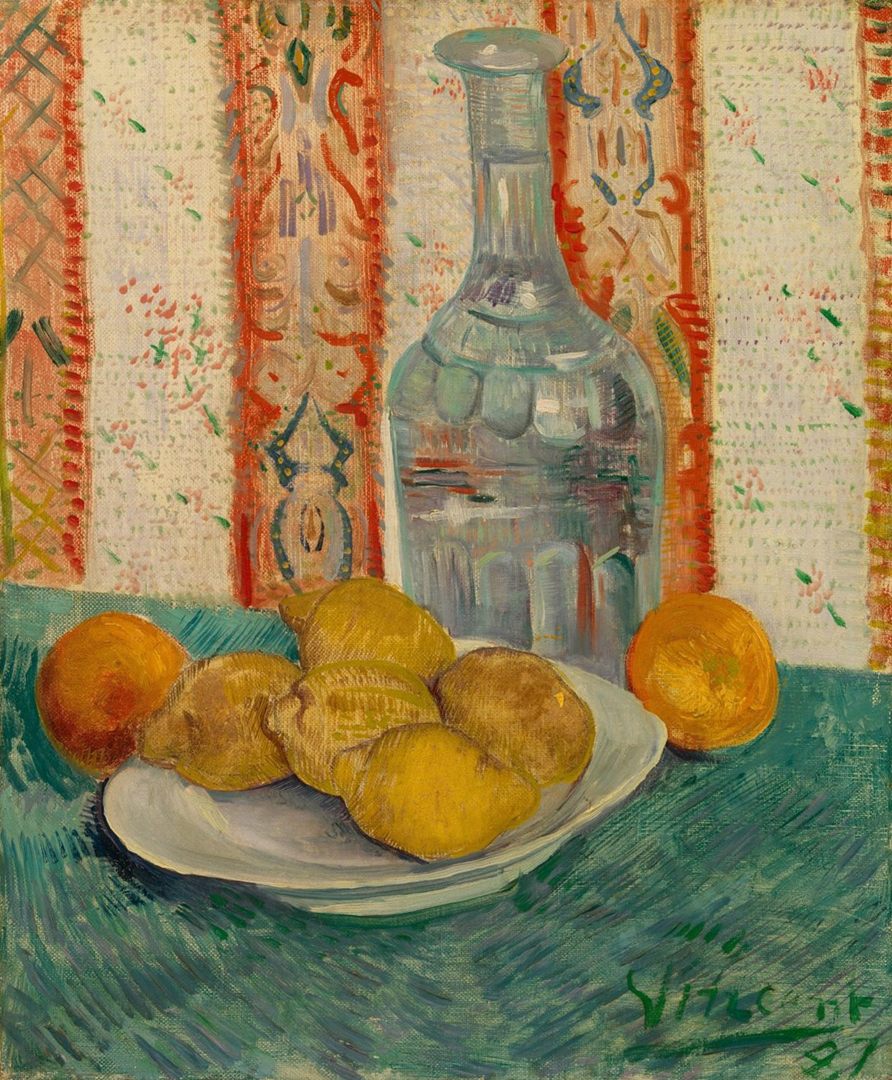 Tigers Blog: “Culinary Arts: The World’s Top 10 Famous Food Paintings” [*]
Tigers Blog: “Culinary Arts: The World’s Top 10 Famous Food Paintings” [*]
“Art has the ability to inspire people. It can make us think, dream, and find new meaning in our lives. It can also make us super hungry. Food paintings and depictions of edible things have been part of famous artworks since the very beginning. From ancient Egyptians carving depictions of crops and breads on tablets, to hyper-realistic grapes painted by Dutch masters, food and art have a long and rich relationship. Here are our top 10 famous food paintings.”
*Quotation above is taken directly from the website cited and is the property of that source. It is meant to inform the reader and to give credit where it is due.
 The Harvard GazetteL “A Feast for the Eyes, Sort of” [*]
The Harvard GazetteL “A Feast for the Eyes, Sort of” [*]
“We’re told, from a young age, not to play with our food. It’s clear many artists never listened. Throughout time, their creative experiments with edible objects — from vegetable-based dyes on colorful canvases to sculptures crafted from cocoa confections — have produced numerous masterworks.
It’s a culinary history that underlies many of the works in Harvard’s collection.
For a literal case of food as art object one has to look no further than the museums’ “Chocolate Lion (Self-Portrait as a Lion),” a small sculpture created from marbled chocolate by German artist Dieter Roth in 1971. It is an atypical take, but not for Roth. Often the aim of self-portraiture is at least superficially a representation of the artist. Roth, however, who was known for his use of unconventional materials, frequently turned to chocolate to create “representations of himself in line with his belief that works of art should ‘change like man himself, grow old and die,’” said Lauren Hanson, the Stefan Engelhorn Curatorial Fellow in the Busch-Reisinger Museum. “Roth used chocolate not to create a natural likeness of himself, but to manifest the truth of his human body and the knowledge that it will age, deteriorate, and eventually turn to dust.””*Quotation above is taken directly from the website cited and is the property of that source. It is meant to inform the reader and to give credit where it is due.
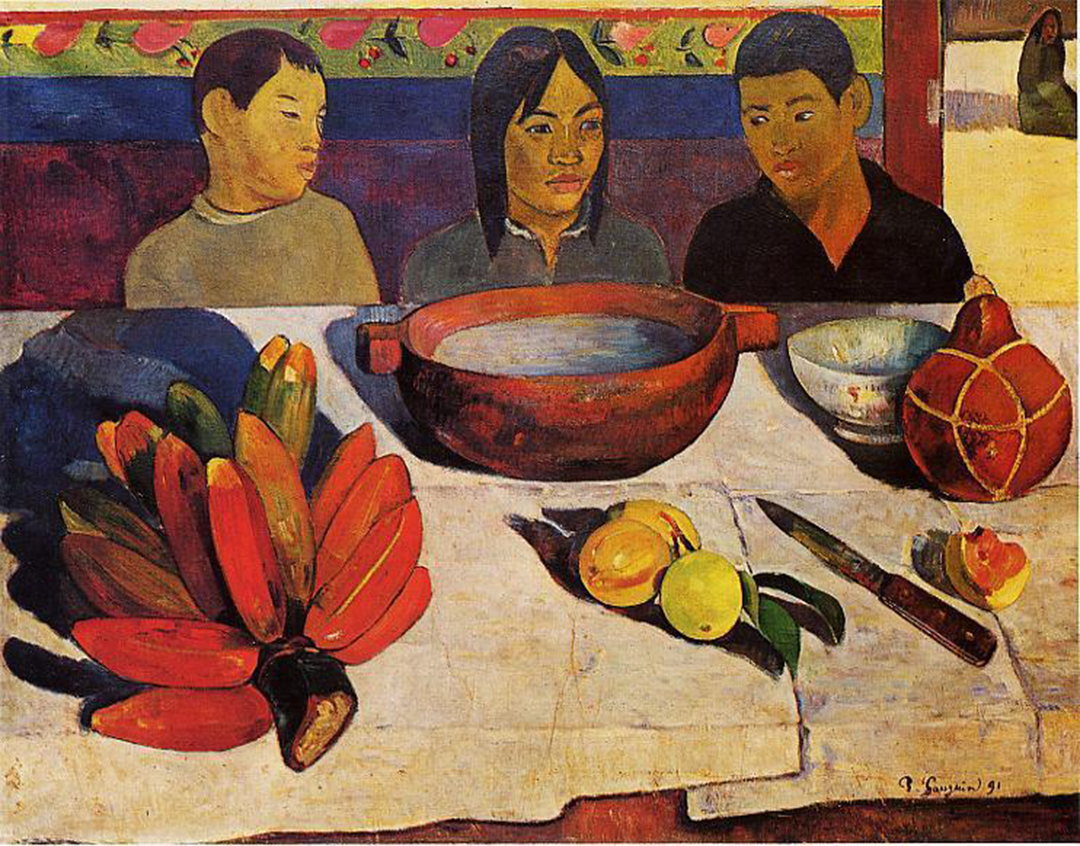 Sybaris: “The Significance of Food in Art” [*]
Sybaris: “The Significance of Food in Art” [*]
“Food not only provides needed sustenance but like fine art, provides immense pleasure. Also, food helps define a culture and allow expression in preparation, making the presentation of foods a creative outlet. Foodstuffs have even been used to create art, like juices and animal fats used in creating paints since the Stone Age. Therefore, it is no surprise that food has been depicted in art for centuries.
When one considers the connection between food and art, the painting of “still life” often comes to mind. Not confined to just edible items, still life allows viewers to reconsider common everyday items when presented in art. The beauty of still life arises from the reality recreated in the painting. The realistic look of the shiny fruit, the juicy meat, or the decadent roasted duck, all demonstrate the skill of the artist. Still life art has been used throughout time and continues to be a method for aspiring artists to focus on their artistic abilities.
Eating has always been a social occasion, for rich and poor alike. However, the Romans took this activity to a whole new level, leaving behind the evidence (and waste) of their gatherings afterward. This was exacerbated by their tradition of collecting foodstuffs for their gods. Since this was socially acceptable, paintings in various forms show this demonstration of the experience, both in exhibiting sacred and everyday occurrences. Works of art show the contentment of wealthy diners, celebrating the experience of eating, socializing, and playing games–along with the mess left behind! However, food in art wasn’t used just to showcase wealth; the lives and experiences of average families were also exhibited in art. Van Gogh’s The Potato Eaters combines the presence of poor food and the perceived reality of being poor in dark colors, adding to the gloomy feeling.”*Quotation above is taken directly from the website cited and is the property of that source. It is meant to inform the reader and to give credit where it is due.
